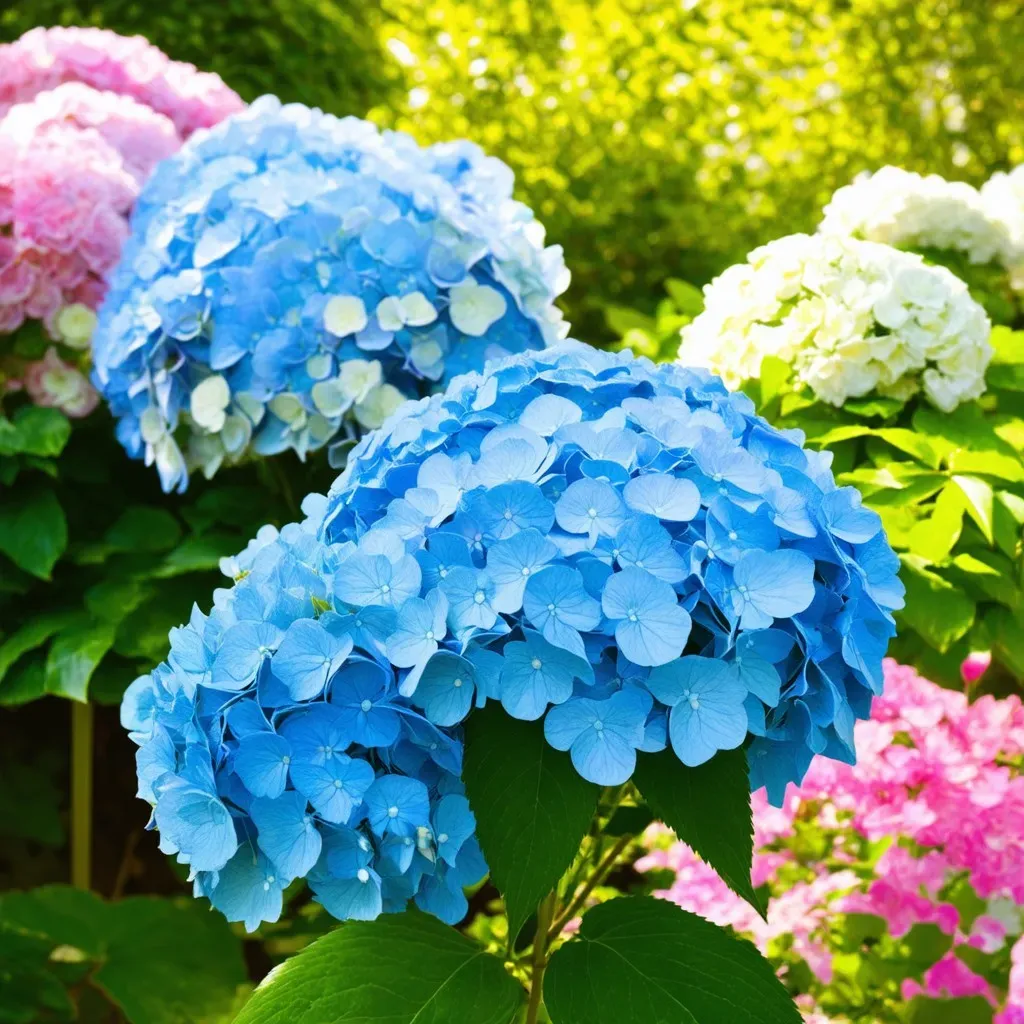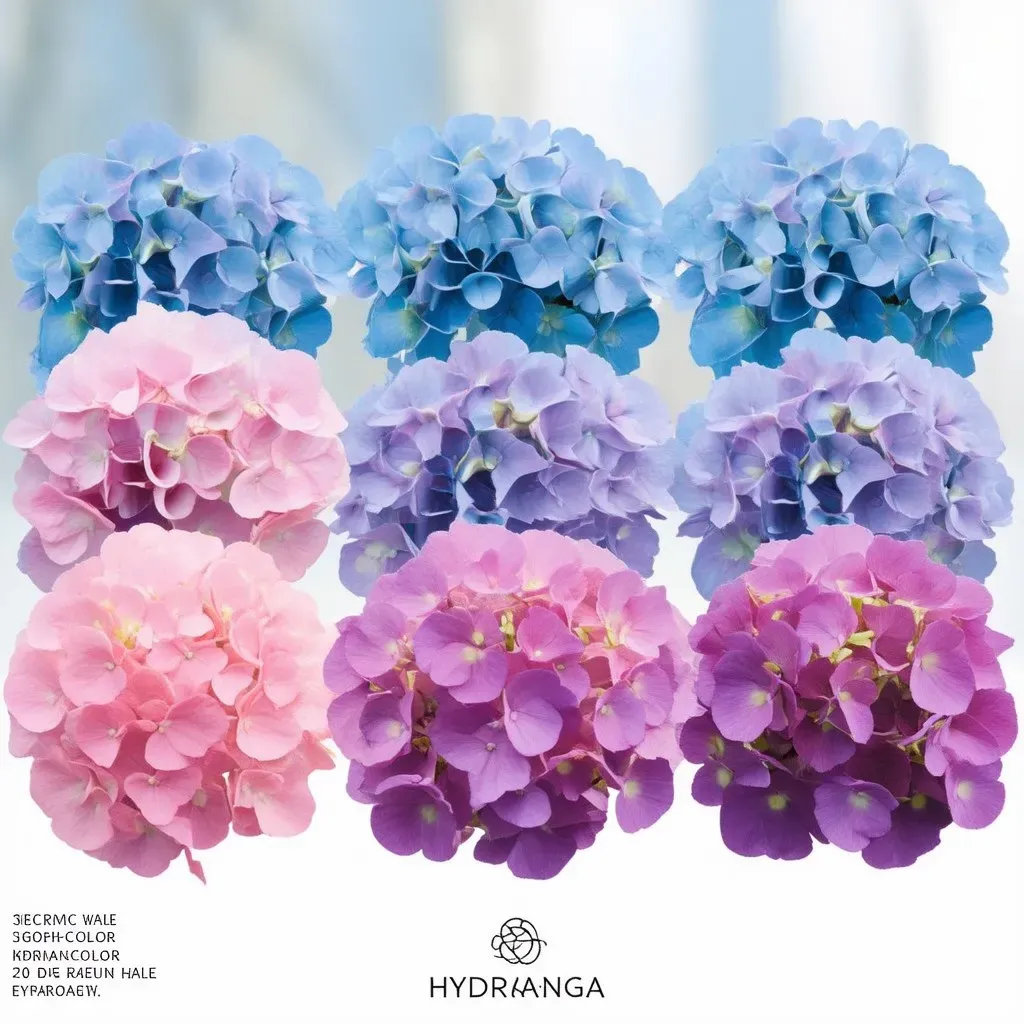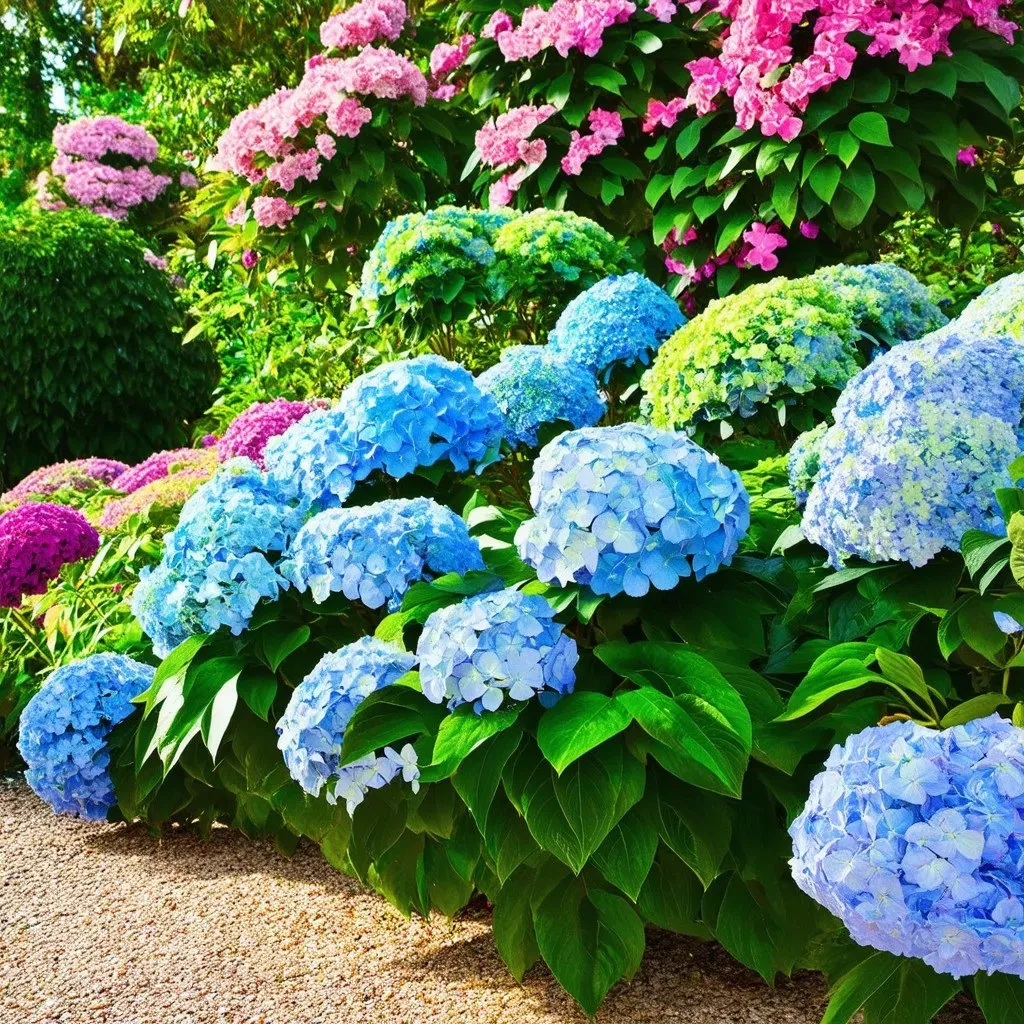Hydrangeas are magnificent flowering shrubs celebrated for their breathtaking blooms that come in an array of colors. The palette of hydrangea colors ranges from vibrant blues and pinks to crisp whites and rich purples, with additional shades of green and even red. The specific color of hydrangeas, particularly those of the bigleaf variety (hydrangea macrophylla), can be influenced significantly by the pH of the soil in which they are planted.
Understanding Hydrangea Colors
Hydrangeas are not just mere decorations; they are botanical marvels influenced by their environment. The following table summarizes the primary hydrangea colors, their corresponding soil pH, and their flower types.
| Color | Soil pH | Flower Type |
|---|---|---|
| Blue | Acidic (pH < 6.0) | Bigleaf Hydrangea (Hydrangea macrophylla) |
| Pink | Alkaline (pH > 7.0) | Bigleaf Hydrangea (Hydrangea macrophylla) |
| Purple | Neutral (pH 6.0-7.0) | Bigleaf Hydrangea (Hydrangea macrophylla) |
| White | Varies | Various types (e.g., Smooth, Panicle) |
| Green | Varies | Various types |
| Red | Alkaline | Limited varieties (some macrophylla) |
Color Variations in Hydrangeas
Various hydrangea species produce an array of colors. Below are some of the notable types and their associated colors.
-
Bigleaf Hydrangeas (Hydrangea macrophylla): Known for their ability to change color based on soil chemistry. You can expect beautiful blue, pink, and lavender blooms.
-
Panicle Hydrangeas (Hydrangea paniculata): Typically featuring large, cone-shaped flower heads, these hydrangeas bloom in white, green, and pink hues that can deepen as they mature.
-
Smooth Hydrangeas (Hydrangea arborescens): Primarily known for their robust white blooms, though some varieties do exhibit pink shades.
-
Oakleaf Hydrangeas (Hydrangea quercifolia): These are recognized for their unique oak-like leaves and mainly produce white flowers, turning pink as they age.
-
Climbing Hydrangeas (Hydrangea anomala petiolaris): While this variety is primarily known for its climbing habit, it produces creamy white flowers that add elegance to vertical spaces.
-
Mountain Hydrangeas (Hydrangea serrata): A lesser-known type, these can display shades ranging from pink to deep purple and are more tolerant of acid soils.
Hydrangea Color Chart
Understanding the color-change mechanism of hydrangeas can be quite fascinating. For those looking to alter their hydrangea’s bloom color, here’s the recommended Hydrangea color chart based on soil pH:
- Pink Blooms: Achieved by maintaining alkaline soil (pH 7.0 and above), enhancing the availability of potassium and phosphorus.
- Blue Blooms: Best obtained in acidic soils (pH 5.5 and lower) where aluminum ions are more soluble, contributing to the blue pigmentation.
- Purple Blooms: Generally occur in neutral pH soils (pH 6.0-7.0), creating a blend of pink and blue pigments.
Hydrangea Growing Tips
Here are some quick tips to achieve your desired hydrangea colors:
- To turn hydrangeas blue, add sulfur or peat moss to acidify the soil.
- For pink blooms, use lime to raise the soil pH.
- Regularly check your soil’s pH level to maintain desired colors.
Natural Color Influences
While root and soil conditions play a significant role in hydrangea coloration, it is also essential to note that not all varieties will change their color even under altered soil conditions. Here are a few colors naturally found in hydrangeas:
-
White: A classic color that remains unchanged regardless of soil pH. Varieties include ‘Annabelle’ and ‘Incrediball’.
-
Green: Often found in the late season as blooms fade, varieties like ‘Limelight’ exhibit distinct green tones.
-
Red: Very rare but can be found in some varieties such as ‘Nantucket Blue’, though color depth often depends on plant health and specific genetics.
Frequently Asked Questions (FAQs)
Can I change the color of my hydrangeas?
Yes, the color of certain hydrangeas (especially bigleaf varieties) can be altered by modifying the soil’s pH levels.
How often should I test my soil pH?
It is recommended to test your soil pH at least once a year, especially before planting or fertilizing hydrangeas.
What types of hydrangeas bloom in fall?
While hydrangeas generally bloom in the summer, certain varieties, like the ‘Endless Summer’, can bloom throughout the fall if properly cared for.
Are all hydrangeas capable of changing color?
No, only specific types like the bigleaf hydrangeas have this unique ability. Most varieties, such as Oakleaf or Smooth hydrangeas, maintain their original colors.
What nutrients are important for hydrangea health?
Hydrangeas typically require nitrogen, phosphorus, and potassium for healthy growth. Additionally, consider adding acid or alkaline amendments based on your desired bloom color.
Where can I learn more about hydrangeas?
You can visit Petal Republic for detailed insights on hydrangea colors and care tips.



Hydrangeas are more than just pretty flowers; they symbolize much more, including resilience and adaptability. These beautiful plants can be tailored to fit specific aesthetic preferences, adding beauty and vibrancy to landscapes and gardens everywhere. Embrace the myriad of colors and enjoy the beauty that hydrangeas bring!


